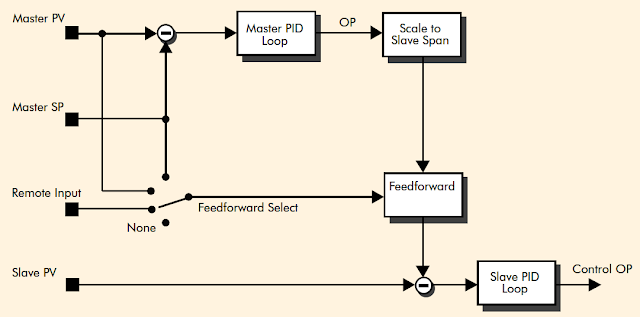 |
| Cascade with feedforward (image courtesy of Eurotherm). |
Cascade control is a technique used to enable processes with long lags to be controlled with the fastest possible response to process disturbances including setpoint changes, while still minimizing the potential for overshoot. This is achieved by controlling a secondary, more responsive process that influences the main process. The main process is controlled using a master PID loop, the output of which is used to determine the setpoint of the secondary process which is controlled by a second PID loop. This second loop is referred to as the slave loop.
Benefits of Cascade Control:
- Accurate control of load
- Compensation for process delays
- Overheating protection
- Optimum Process response
Cascade with feedforward
 |
| Vacuum heat treatment furnace. (Image courtesy of Eurotherm) |
Feedforward is an option available when using cascade control. It allows either the master PV, master SP or user defined variable to be fed forward so that it directly influences the slave setpoint (see diagram below).This minimizes the amount of work required from the master PID loop.
Master SP/PV feedforward
In this mode the feedforward limits are set directly in the slave loop’s engineering units, which also adjusts the gain of the feedforward path. In the case of PV feedforward this allows the difference between the master and slave PV’s to be limited and is often called “Delta T control”. This is used on reactor vessels and autoclaves to limit temperature gradients, thus minimizing processing time and ensuring consistent product quality.
Process feedforward
 |
| Pasteurization (image courtesy of Eurotherm). |
An example where cascade control with feedforward can be used is in pasteurization heat exchangers. The feedforward signal allows the controller to compensate for rapid variations in inlet flow therefore maintaining a stable outlet temperature.
Cascade Control is ideal for:
- Heat treatment furnaces
- Vacuum furnaces
- Autoclaves
- Semiconductor diffusion
- Batch reaction vessels
- Heat exchangers
- Crystal growth
- Distillation columns
Reprinted with permission from Eurotherm.